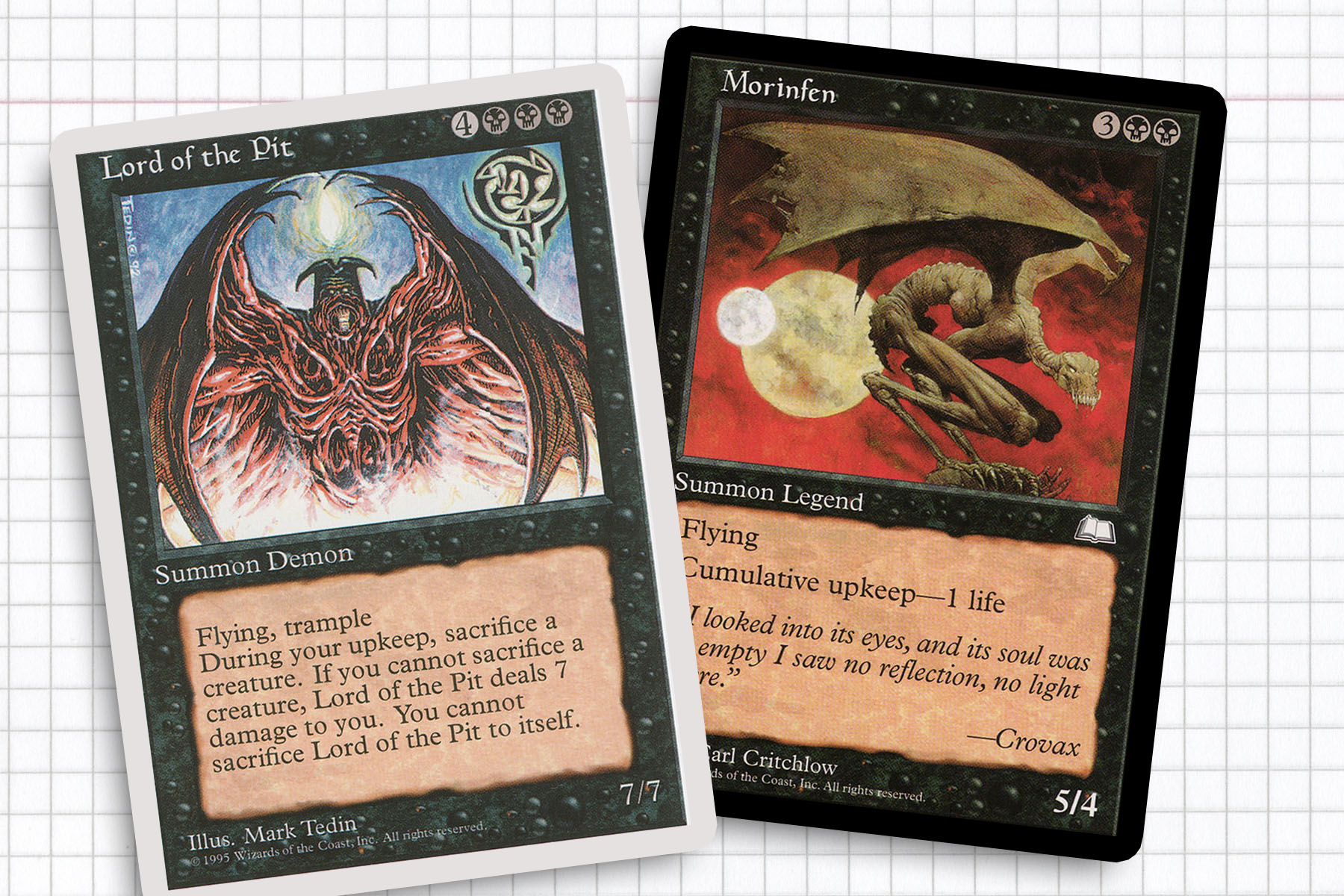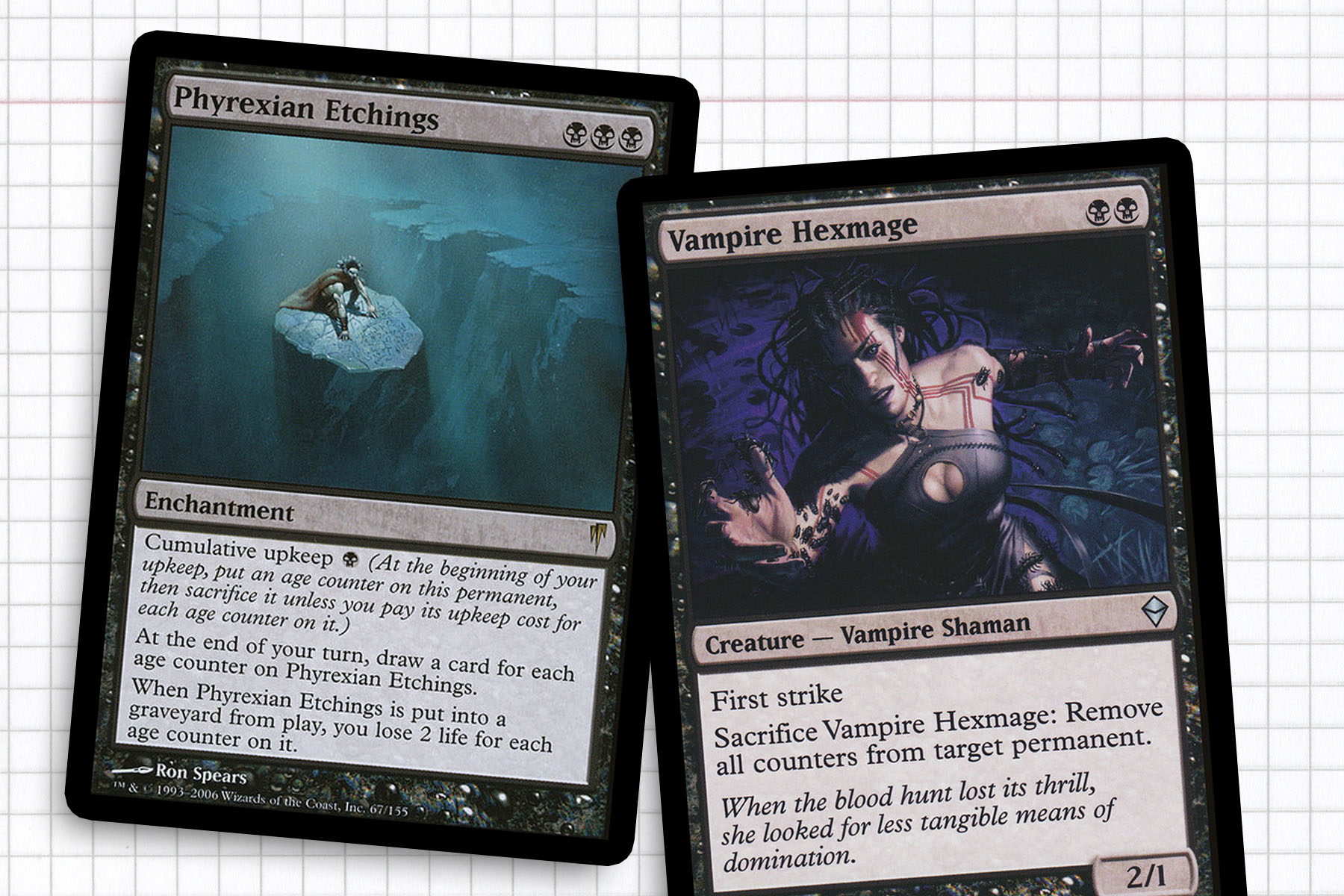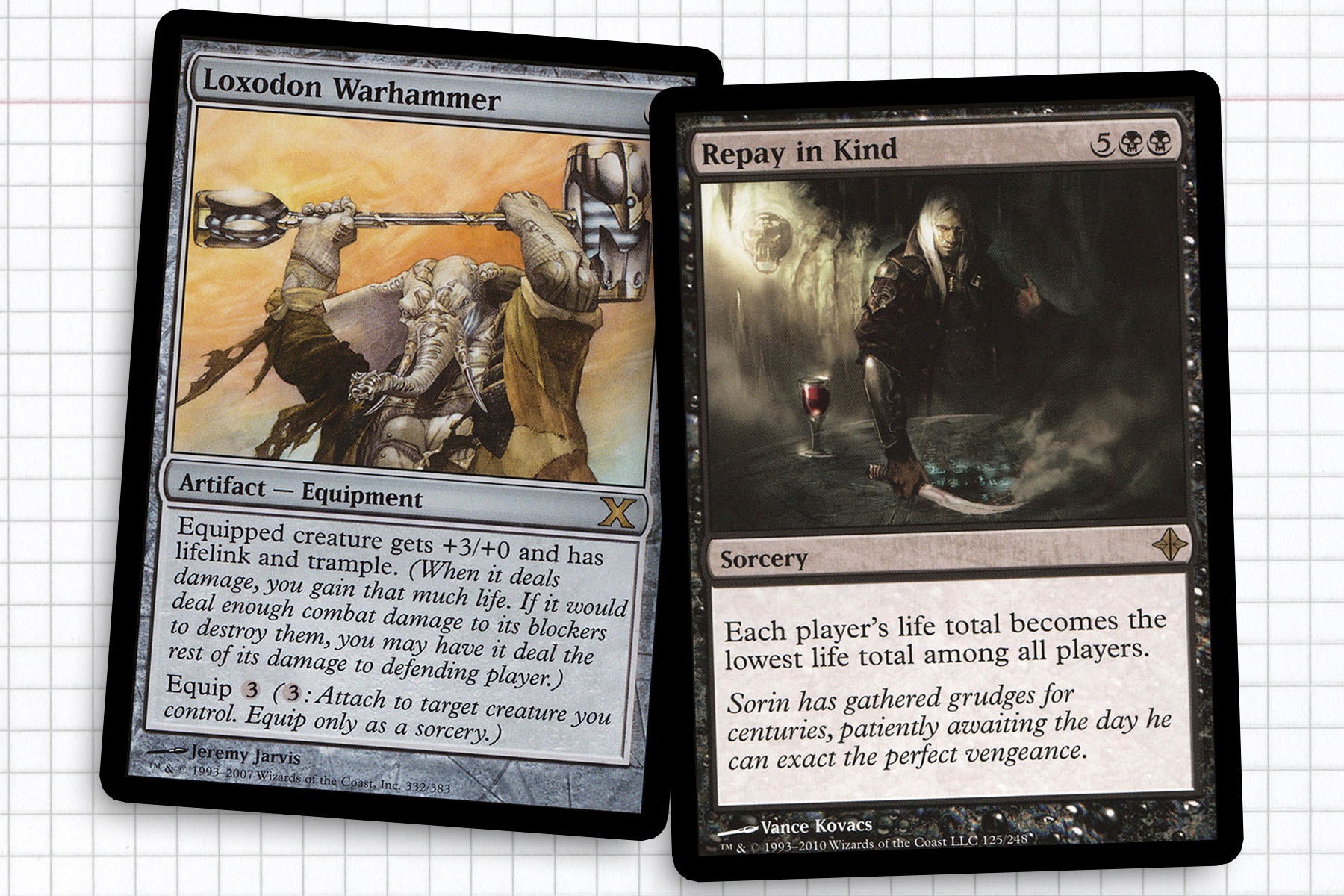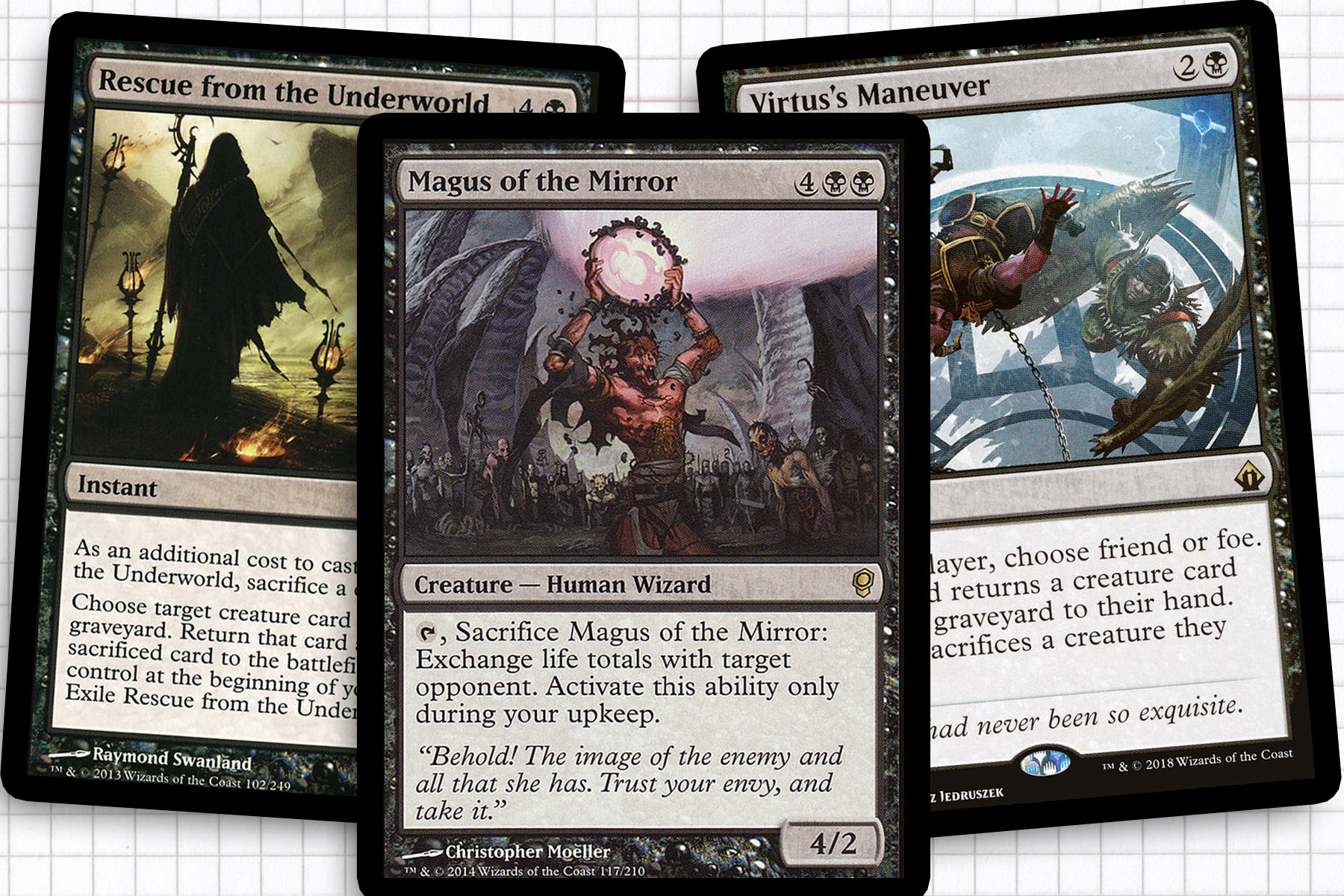Dollar General—[dol-er] [jen-er-uhl]
A variant of the Commander format, itself a casual multiplayer variant format for Magic: the Gathering with specific rules centered around a legendary creature called a General. The additional layer being that every card comprising a 100-card deck must cost less than a US dollar.
Dollar General is an interesting variant format of Commander, because the fluctuation of prices of cards from a new reprint or just something rotating out of Standard can mean that strategies that were not available two or three months ago are entirely viable now. A format relying on draft fodder and the kinds of rares that normally just take up space in a trade binder also means that the decks coming to the table have the potential to be far more original than other decks stocking the objectively best options.
This week I wanted to use the format as a vehicle to investigate a general that has seen very little spotlight within the greater Commander format. With this goal alone it wasn’t hard to just look at a list of the least played commanders in the format and try to decide on one. While I would never call it a great plan of action, sometimes the best strategy for finding the next Commander deck you want to build is looking where other people haven’t.
With barely two dozen Morinfen decks registered on EDHrec, I took that as a challenge. While I could have chosen Morinfen’s equally malined find-the-difference buddy Gallowbraid, I feel that flying will make for a more impressive general. To find a way to make a deck out of this reasonably passable creature felt like it would become a badge of honor. I want to build a deck that looks at life as a resource that can leveraged to improve the gameplay experience, while keeping in mind the interactions that can be had with cumulative upkeep. And of course, keeping all my picks until the budget of a dollar a piece. So let’s look into my version of the deck.

Keeping Up with Morinfen
Even outside of Dollar General, Morinfen is the best flying body on a mono black general at his casting cost. Looking into the origins of this week’s general, Morinfen and Gallowbraid were the first Phyrexians to show up in Dominaria after the Brothers’ War. They plagued Crovax the Cursed as they attacked his home land of Urborg. Beyond that they don’t play any major role in the Magic lore, to the point where I have to wonder if their significance was only made relevant after the fact as Wizard’s equivalent of the Story Team in 1998 was looking to fill in Crovax’s backstory.
I have to wonder if even during the time of printing in Weatherlight this was a viable card to play in any deck. The methods for regaining life in large chunks were not easily attainable, outside of cards like Drain Life, Spirit Link, and Zebra Unicorn. I can remember finding Morinfen not long after opening a Konda’s Banner and looking through Gatherer for applications for the equipment. While not true cumulative upkeep, my only comparable creature at the time was Lord of the Pit, which had been the creme-de-la-creme of black creatures up to that point.
But then there is the payment of cumulative upkeep via life. On the surface losing life at an accelerated pace is a major turn off, every turn becoming more vulnerable. Undoubtedly this is the reason Morinfen has been built around in such small numbers. Creatures have become something far more efficient in the last twenty years and don’t require a sizable amount of life to play on-curve. But like I said, this objective downside brought with it an interesting challenge that I think can be easily manipulated.

Removing Counters
Cumulative upkeep [cost] (At the beginning of your upkeep, if this permanent is on the battlefield, put an age counter on this permanent. Then you may pay [cost] for each age counter on it. If you don’t, sacrifice it.)
When the mechanic first appeared in Ice Age, cumulative upkeep came with a bit of a memory issue, as the tracking of cost had no official marker. With the release of Coldsnap, cumulative upkeep was changed rather slightly so that a card with the mechanic would accumulate counters as a way to physically track the cost of keeping that card in play. This change allows us some room to “cheat the system” and lessen the life tax our general will have on us. By removing counters with Aether Snap, Vampire Hexmage, or Thrull Parasite we will not only be slowing the amount of of life we lose, but we can also take advantage of cards like Phyrexian Etchings and Phobian Phantasm as on-theme card choices.
Even in the face of the downside, the resource of life is all that we need to pay to play with our general, so we need to built towards regaining some of that life.

Playing with Life
There are two ways we can look at how we want to manage our life total: by gaining life as a by product of other things we’ll be doing, or by passing our low life total off to someone else. The first idea should be pretty simple. In the last twenty years lifelink has become a keyword pretty easy to come by. Tossing an Eternal Thirst or Loxodon Warhammer in the direction of our biggest creature is going to do a lot to supplement the life loss we’ll have with our general or active Murderous Betrayal. But even staple options like Gray Merchant of Asphodel will do well to keep us off the ropes against the table.
What intrigues me more is the high risk moments that are also possible when we are ripping through our life total with reckless abandon, such as using Lurking Evil to drop out life total terribly low, only to cast Repay in Kind before attacking with one of our lifelink options. Other times, simply casting Dire Fleet Ravager will display that we only need one life point to operate our deck.
But this type of reckless gameplay is not for everyone. Sometimes only recouping a few life points with lifelink isn’t going to be enough and other times, we become too vulnerable if we pass the turn with less than a dozen point of health. This is where Magus of the Mirror or Soul Conduit can be advantageous, allowing us to drop our life total with the safety net of knowing that we’ll just pass the pain off to someone else.
The least flashy of our options is also just having a general disregard for our life total and using life as a resource. Baleful Force is an often overlooked card that acts as a Phyrexian Arena that can do meaningful damage as a target for Vampiric Link. Phyrexian Scuta can be a fine vanilla beater with a small investment of life. In fact, I would often rather keep my Slaughter and lose four life as a tex for doing so. Too often people get fixated on a low life total, but in all my experience I’ve learned that you only need one to keep playing the game and that has allowed me to focus my worried elsewhere.

Rebirth
Regardless of how we might want to avoid paying the upkeep cost or how far we’re willing to let our life drop; because of how I’ve chosen to build my version of the deck, I don’t believe sacrificing Morinfen to its upkeep cost is going to be much of a downside. I plan to utilize black’s reanimation options to just recast it anyway. This is admittedly my weakest application of black’s skills in my typical build with the color—I’m often too distracted by all the other things my color identity might be capable of to include one of it’s early tennents. But it’s a very important part of the build of this deck.
With a suite of cards including, but not limited to Artisan of Kozilek, Rescue from the Underworld, Victimize, and Zombify we can avoid paying commander tax and high upkeep costs when our resources with either start to get harder to come by. But with these cards at our disposal, it also means that we can be getting back utility creatures like Vampire Hexmage, Torgaar, Famine Incarnate, or Magus of the Mirror when they can be fruitful for us as well.
Brainstorming with this deck makes me really excited for the next night at Dollar General I partake in, which might be at another secret santa event taking place after the new year. And unfortunately I can’t touch on every nuance of my proposed deck. This deck composition is not without its flaws, and as I’ve already spelled out it’s not going to play to everyone’s taste in a deck. But I do think that there’s an awful lot to learn from playing a deck that goes hard on using life as a resource and not as an afterthought on a pair of 20-sided die. But I hope someone reading this or someone who my audience might know can find something that they like about this deck that speaks to them. Until next time.
Ryan Sainio is a Graphic Designer who writes about EDH, the EDH community, and streams on Twitch in his down time. He has been playing Magic: The Gathering since 7th Edition in 2002 and values flavorful and fun gameplay over competitively optimized decks. Join him for a stream at twitch.tv/hipstersainio on Tuesday nights.

